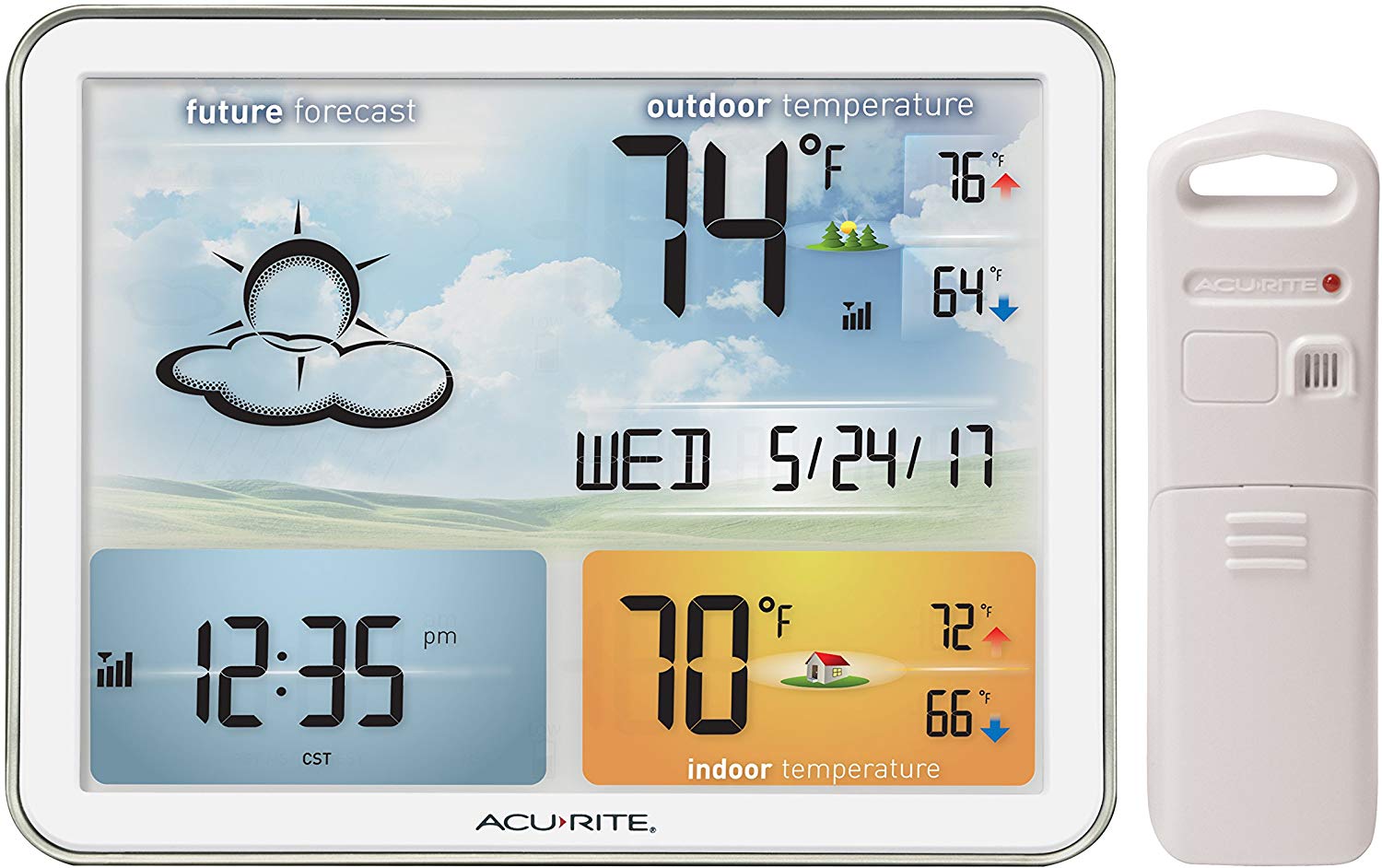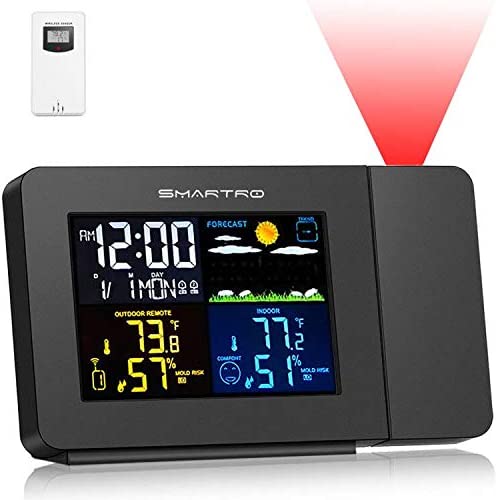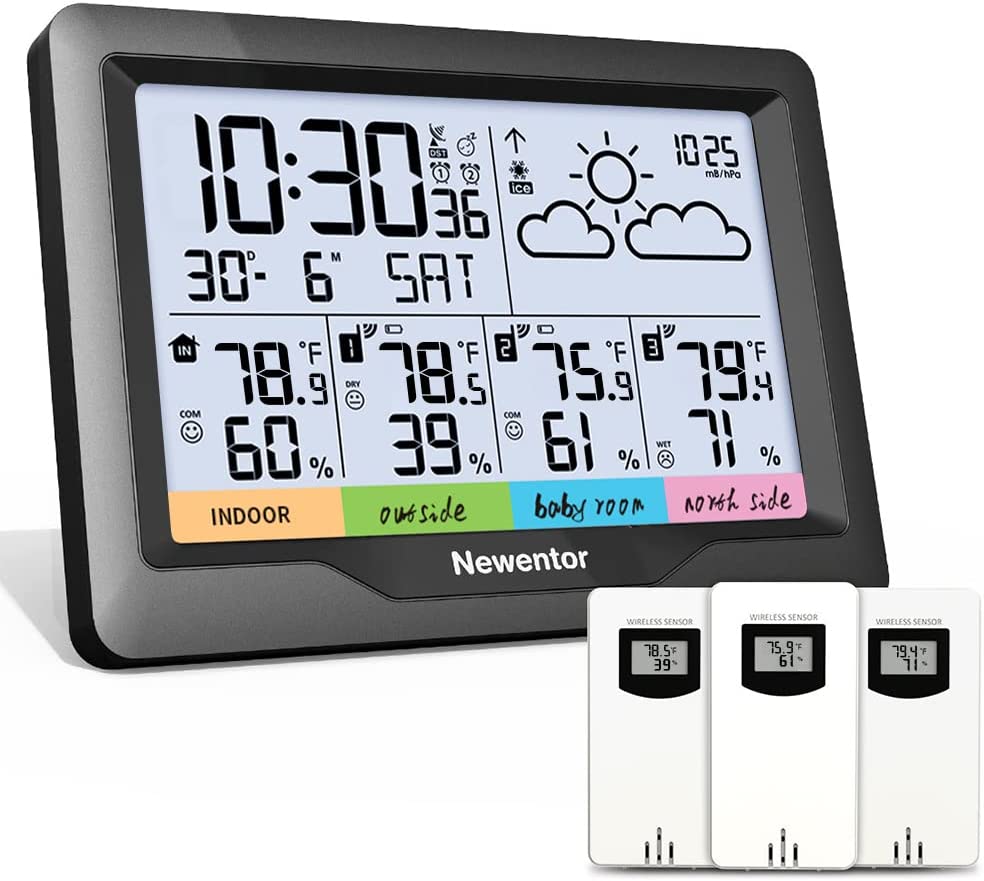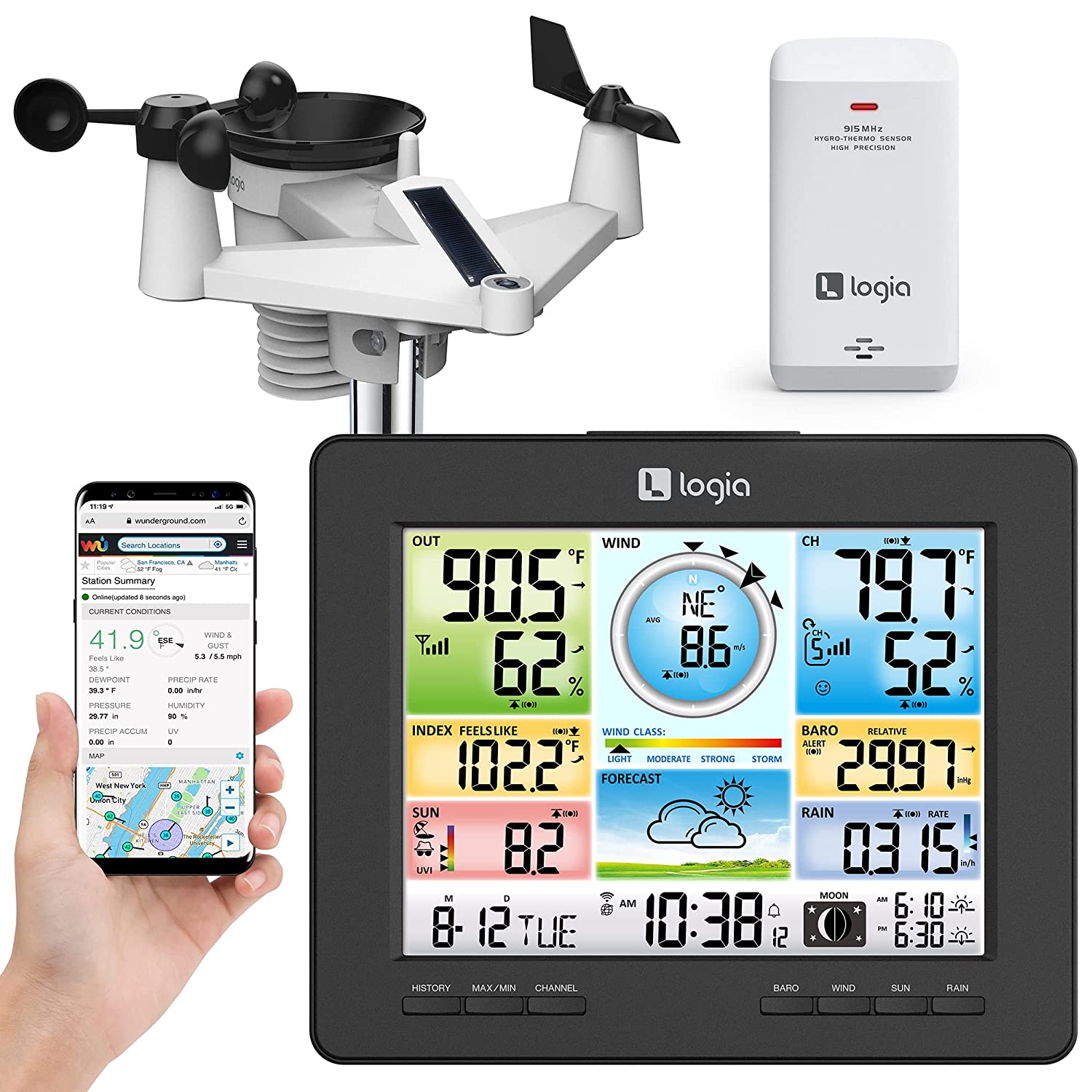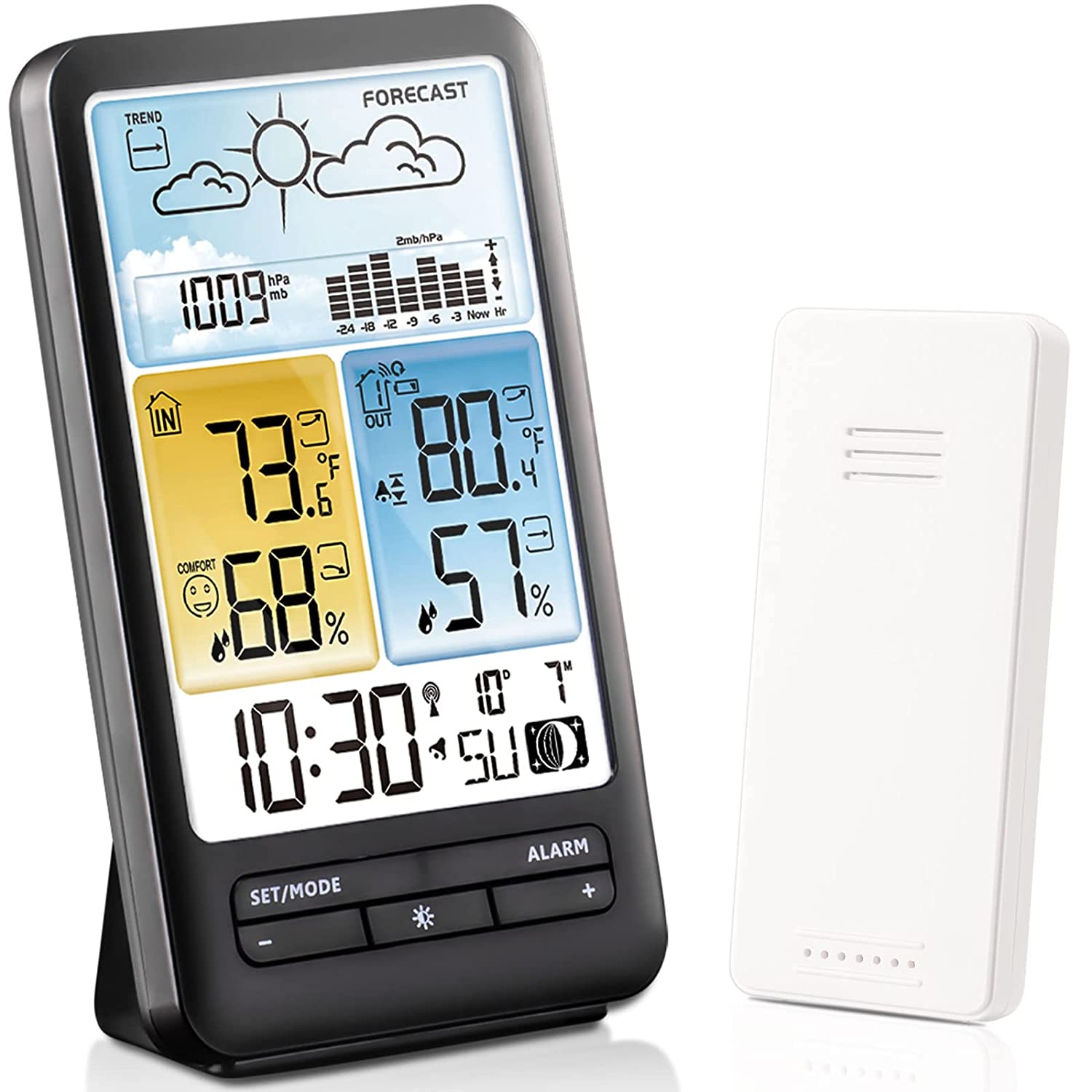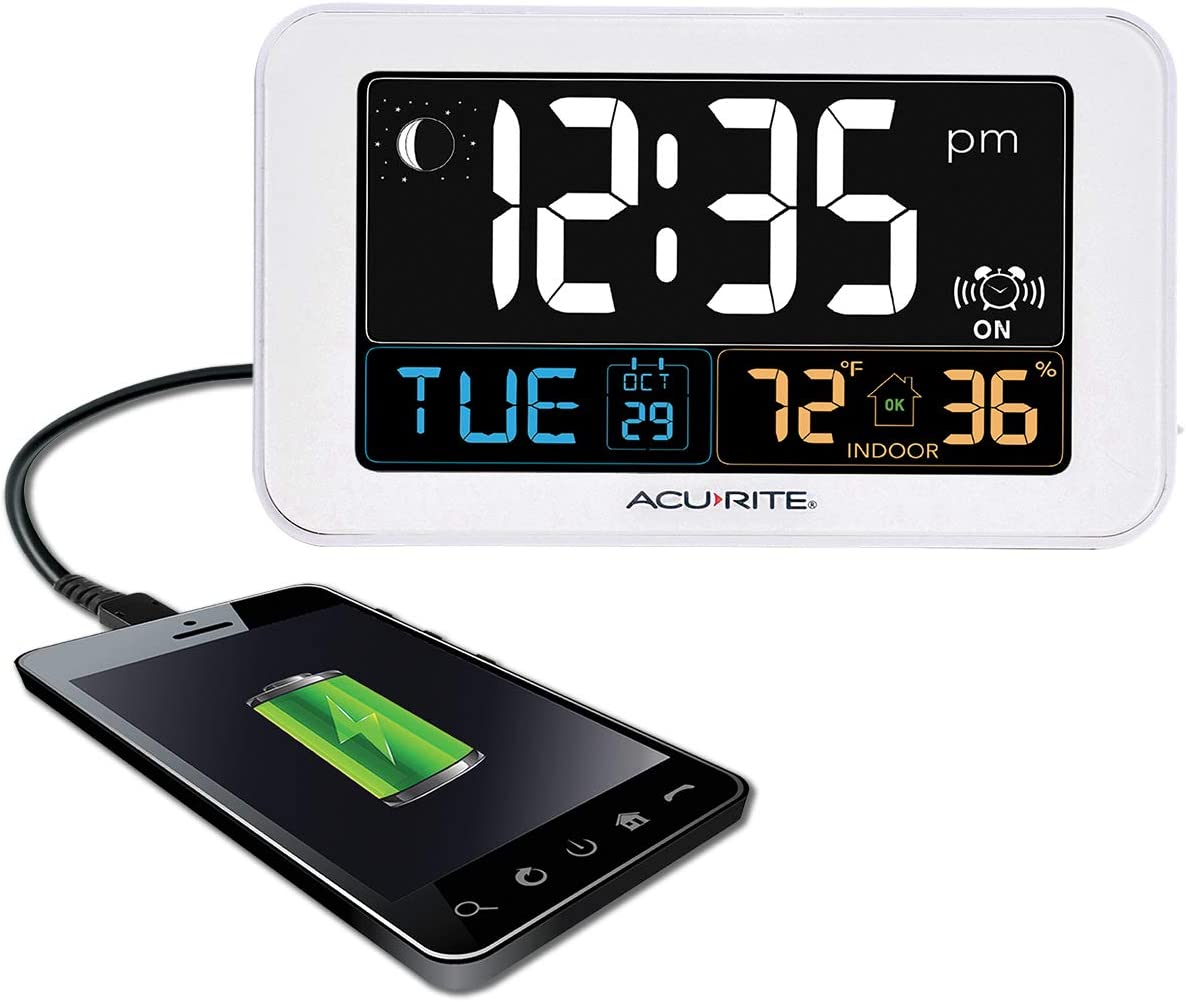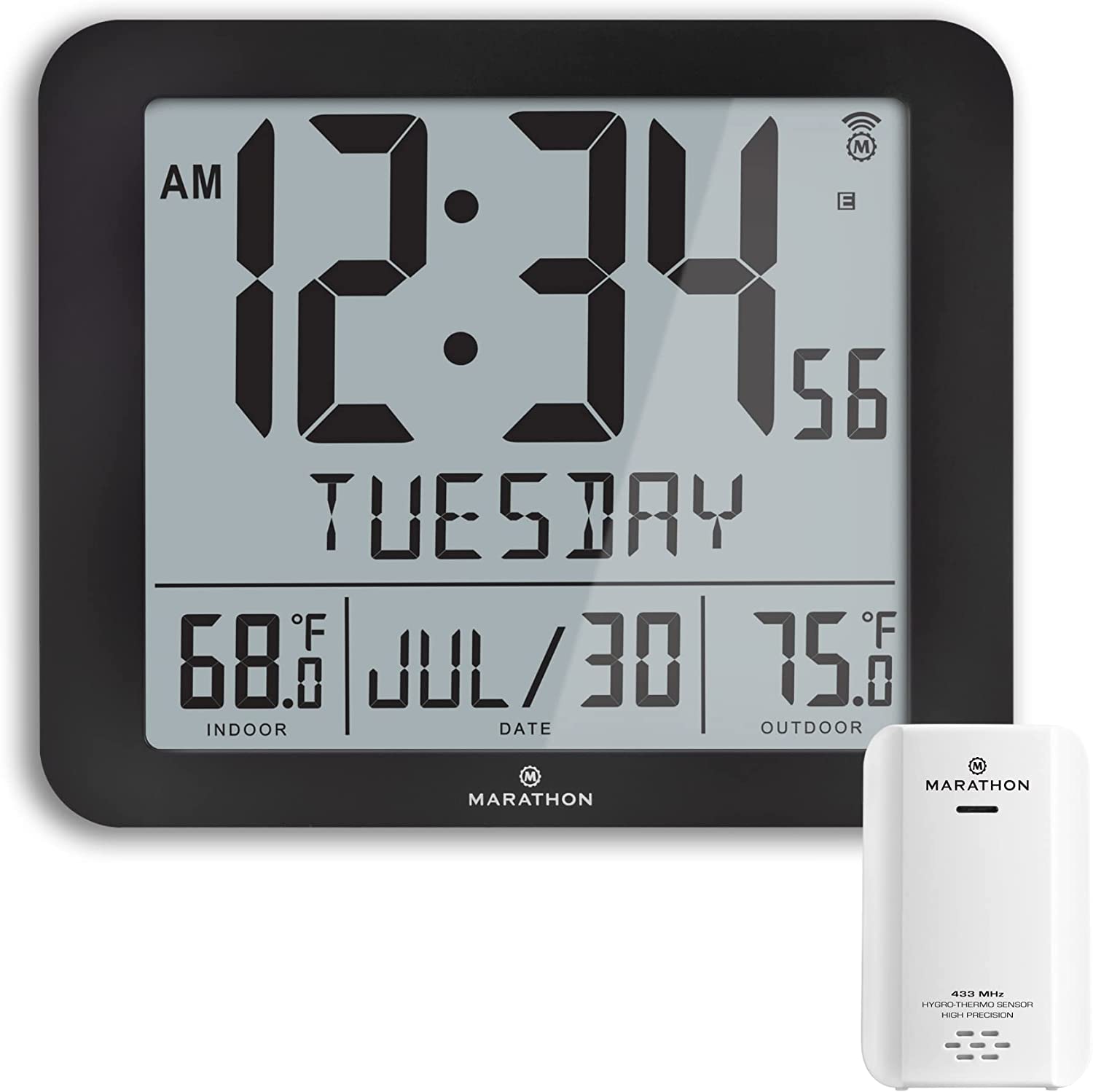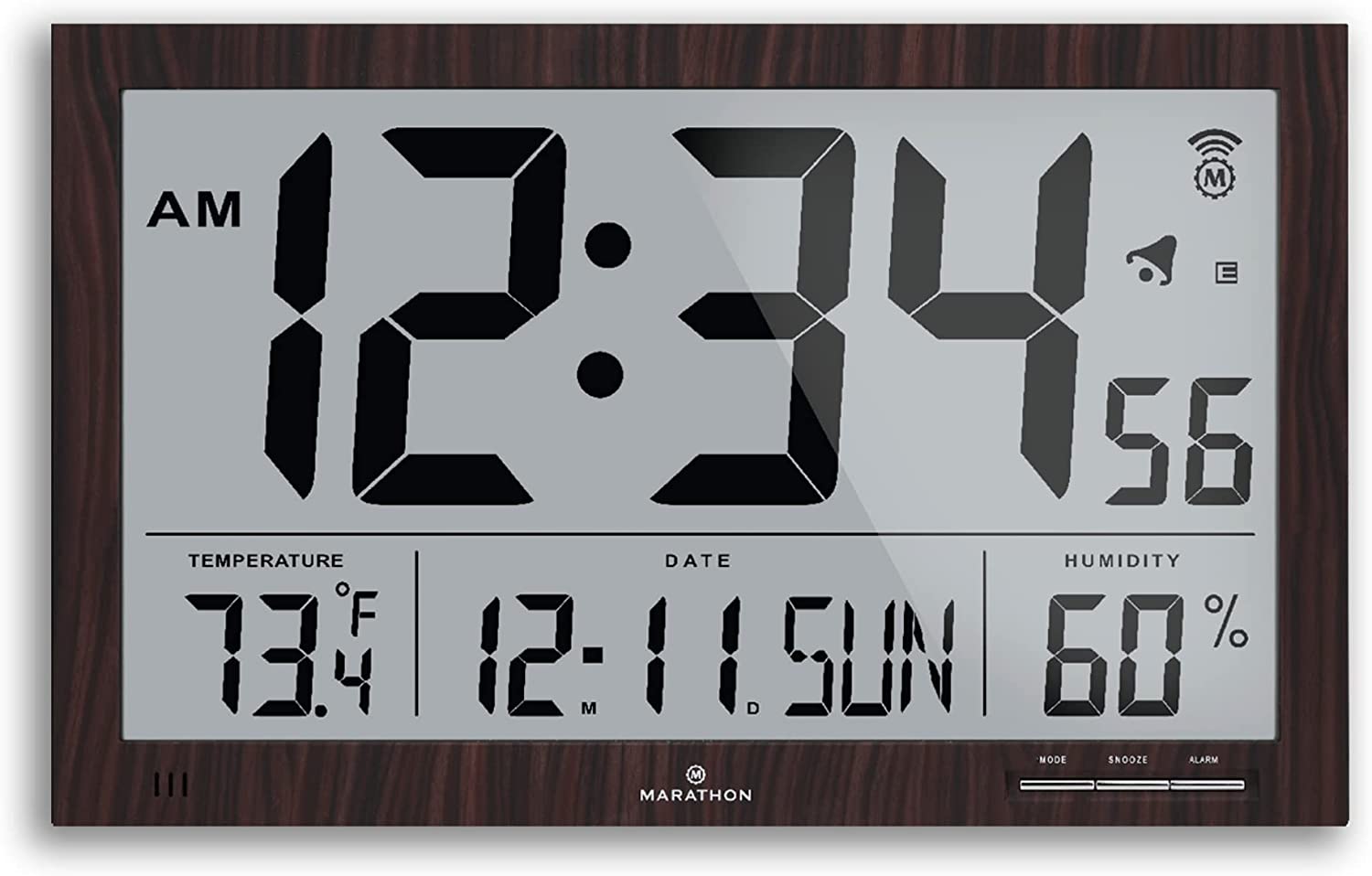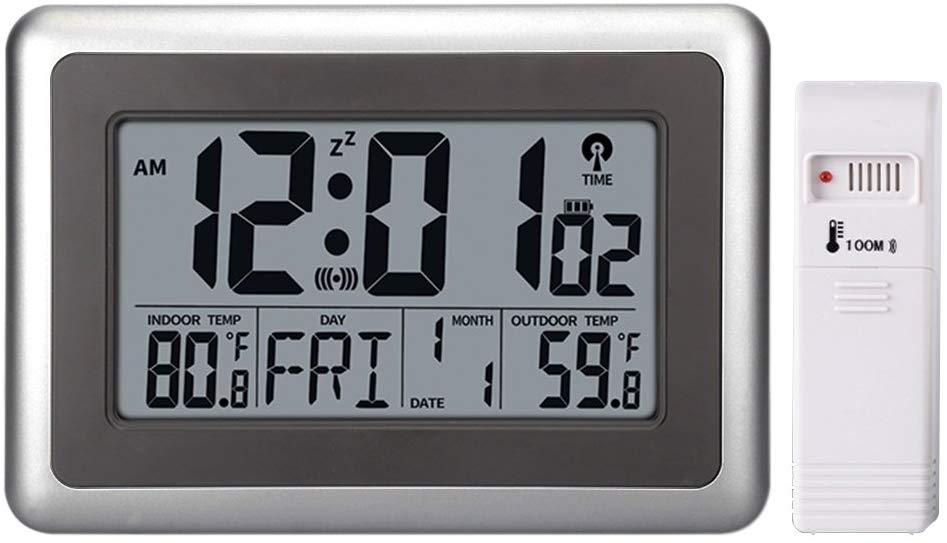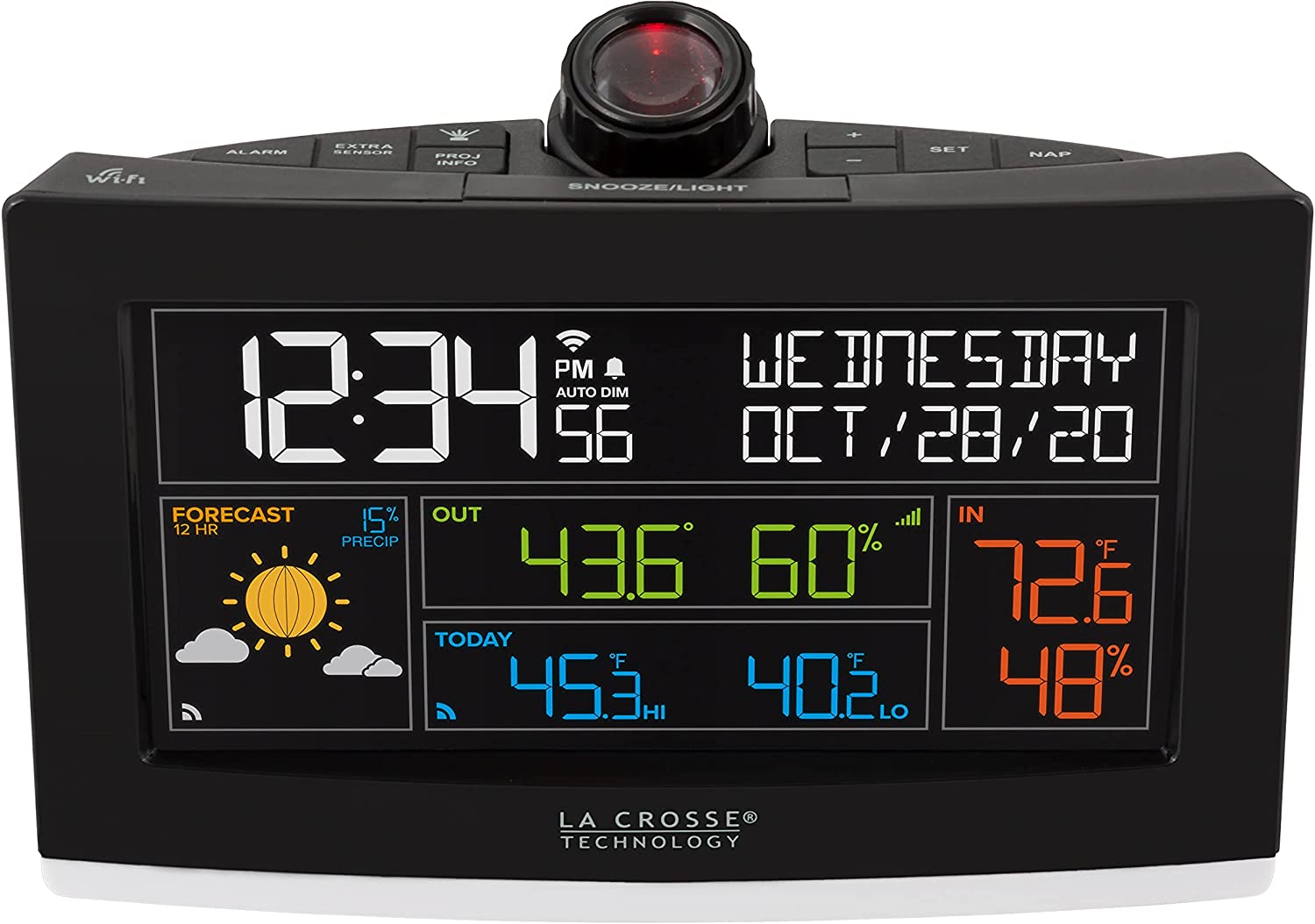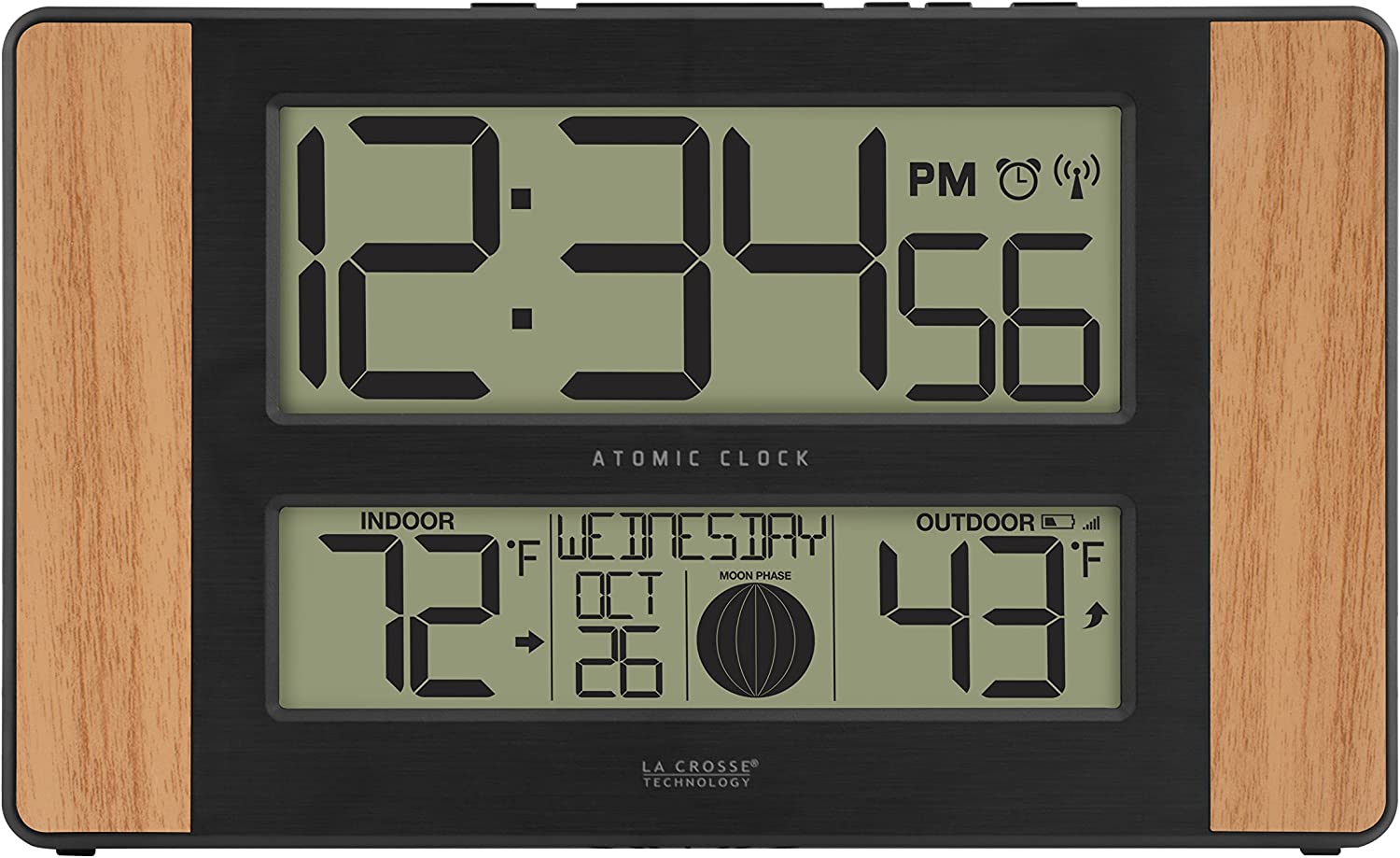AcuRite Self-Calibrating Forecasting Weather Monitoring Clock
Last updated: May 31, 2023
From the time you insert the batteries, you'll notice the AcuRite Weather Station Atomic Clock's display is different from competitors. While many weather clocks run on batteries, this model runs on AC power with the option of using a battery, which also operates as a backup for continuity during a power outage. You get an icon to go with the day's weather forecast for extra visual enhancement.
We looked at the top Weather Monitoring Clocks and dug through the reviews from some of the most popular review sites. Through this analysis, we've determined the best Weather Monitoring Clock you should buy.
Product Details
Key Takeaway: The AcuRite Weather Station Atomic Clock stands out for its unique background and attractive layout.
In our analysis of 39 expert reviews, the AcuRite Self-Calibrating Forecasting Weather Monitoring Clock placed 8th when we looked at the top 12 products in the category. For the full ranking, see below.View our Weather Monitoring Clock buying guide for in-depth advice and recommendations.
